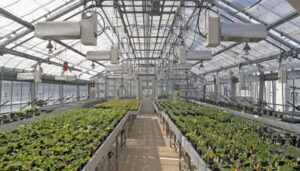Industrial places, such as metalworking plants, can emit a large amount of harmful gases. Due to the possibility of expanding the sensors, it can be added sensors for the corresponding gases and in the real time monitor their presence in the air. It may be really humane as a warning of the transmission of harmful gases in order to preserve the environment and human life
IoT (Internet of Things) technology has found remarkable application in the realm of environmental protection. By leveraging the power of interconnected devices, sensors, and data analytics, IoT enables innovative solutions to monitor, conserve, and safeguard the environment. Here’s a glimpse into the various ways IoT is transforming environmental protection:
- Air Quality Monitoring: air quality monitoring systems employ sensors to measure and track air pollution levels in real time. These sensors detect pollutants such as particulate matter (PM), nitrogen dioxide (NO2), and volatile organic compounds (VOCs). The collected data is analyzed to identify pollution sources, evaluate air quality trends, and enable informed decision-making for implementing mitigation measures.
- Water Management: devices are used to monitor water quality, detect leakages, and optimize water usage. Sensors placed in water bodies or distribution networks collect data on parameters like pH, temperature, dissolved oxygen, and turbidity. This data helps identify contamination, ensure water safety, and support efficient water resource management.
- Waste Management: waste management systems utilize smart bins with sensors that monitor fill levels. These sensors trigger alerts when the bins are full, optimizing waste collection routes and reducing unnecessary pickups. Additionally, IoT solutions enable tracking and monitoring of waste disposal processes, promoting recycling and effective waste management practices.
- Environmental Conservation: it is instrumental in conserving natural resources and protecting endangered species. For instance, IoT-enabled devices monitor wildlife habitats, tracking animal movements and behaviors. This data aids in understanding biodiversity patterns, preventing illegal activities, and implementing conservation measures.
- Energy Efficiency: it plays a vital role in promoting energy efficiency and sustainability. Smart grids equipped with IoT devices optimize energy distribution, monitor consumption patterns, and enable demand-response mechanisms. Smart homes and buildings equipped with IoT-based energy management systems help users monitor and control energy usage, reducing waste and promoting eco-friendly practices.
- Climate Monitoring and Disaster Management: devices, including weather sensors and remote sensing technologies, facilitate real-time climate monitoring. This data aids in predicting weather patterns, identifying climate change trends, and improving disaster preparedness and response. IoT-based early warning systems help mitigate the impact of natural disasters, safeguarding lives and reducing damage.
- Precision Agriculture: technologies are revolutionizing agriculture by enabling precision farming practices. Sensors integrated with soil monitoring systems collect data on moisture levels, temperature, and nutrient content. This data helps optimize irrigation, fertilization, and pest control, leading to improved crop yields, reduced resource usage, and minimized environmental impact.
By harnessing the potential of IoT in environmental protection, we can address pressing ecological challenges, promote sustainable practices, and create a greener future. The seamless integration of IoT devices, data analytics, and intelligent decision-making enables us to better understand, monitor, and protect our environment, ultimately fostering a healthier planet for generations to come.



